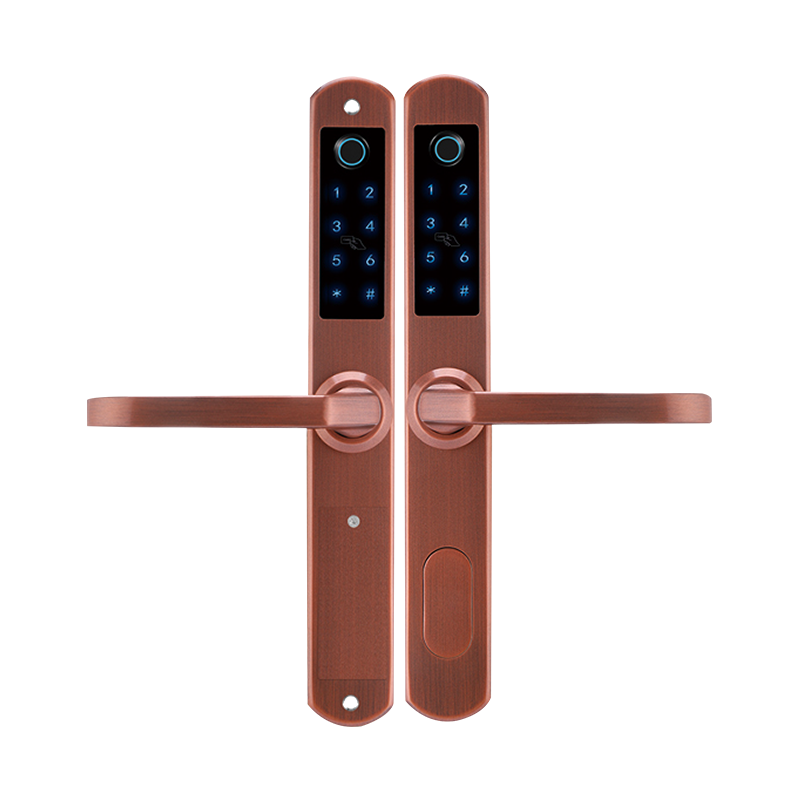How to Choose a Waterproof Fingerprint Lock?
Waterproof fingerprint locks have become increasingly popular for securing homes, offices, and outdoor storage due to their convenience and biometric security features. Unlike traditional mechanical locks, these devices use fingerprint recognition technology to allow authorized access while preventing unauthorized entry. Choosing the right waterproof fingerprint lock involves several considerations, including security features, waterproof and durability ratings, compatibility and installation, and usability and power management. Each of these aspects ensures that the lock functions reliably in the intended environment.

1. Security Features
Security is the primary factor to consider when selecting a fingerprint lock.
Fingerprint recognition accuracy: The effectiveness of a fingerprint lock depends on its sensor technology. Advanced optical or capacitive sensors provide higher accuracy, reducing the chance of false acceptance or rejection. For example, a lock installed on an office gate should reliably differentiate between registered users and unknown individuals to prevent unauthorized access.
Number of fingerprint entries supported: Locks vary in the number of fingerprints they can store, from a few dozen to several hundred. Selecting a lock that can store an adequate number of users ensures convenience for households or shared facilities without compromising security.
Backup authentication methods: Even with biometric verification, it is useful to have alternative access methods such as PIN codes, mechanical keys, or RFID cards. This ensures entry in cases where the fingerprint sensor may be temporarily unavailable due to dirt, injury, or technical issues.
Tamper alerts and security protocols: Some fingerprint locks include alarm features that activate if someone attempts to force entry or bypass the system. For example, a lock for a storage shed exposed to public areas can alert the owner in case of tampering.
Evaluating these security features helps ensure that the lock provides both reliable access for authorized users and protection against unauthorized entry.
2. Waterproof and Durability Ratings
Waterproof fingerprint locks are designed for environments exposed to moisture or weather conditions, making durability a crucial consideration.
Waterproof rating: Check the IP (Ingress Protection) rating of the lock. For instance, an IP65 or IP67 rating indicates that the device is resistant to water jets or temporary submersion, which is suitable for outdoor gates, poolside lockers, or humid areas.
Dust and corrosion resistance: Outdoor environments may expose the lock to dust, sand, or saltwater. Materials such as stainless steel or corrosion-resistant alloys help maintain long-term functionality.
Temperature tolerance: Temperatures, either hot or cold, can affect electronic components. Locks designed to operate within a wide temperature range ensure reliable performance in both winter and summer conditions.
Impact resistance: Some locks are designed to withstand physical impact or minor vandalism, preventing damage from accidental or intentional force.
By considering waterproof and durability specifications, users can select a lock that remains functional and secure under environmental stress.
3. Compatibility and Installation
The ease of integration with doors or gates and compatibility with existing systems is another essential factor.
Door type compatibility: Ensure that the lock fits the specific type of door, gate, or cabinet. Some locks are intended for wooden doors, while others suit metal gates or sliding doors. Correct sizing and mounting options are crucial for secure installation.
Installation method: Locks may offer surface-mounted, mortise, or cylindrical installation. Choosing a method compatible with the structure reduces installation time and avoids structural modifications.
Connectivity options: Some fingerprint locks offer Wi-Fi or Bluetooth integration for remote access, monitoring, or logging. This feature is particularly useful for office settings or shared spaces where access tracking is necessary.


